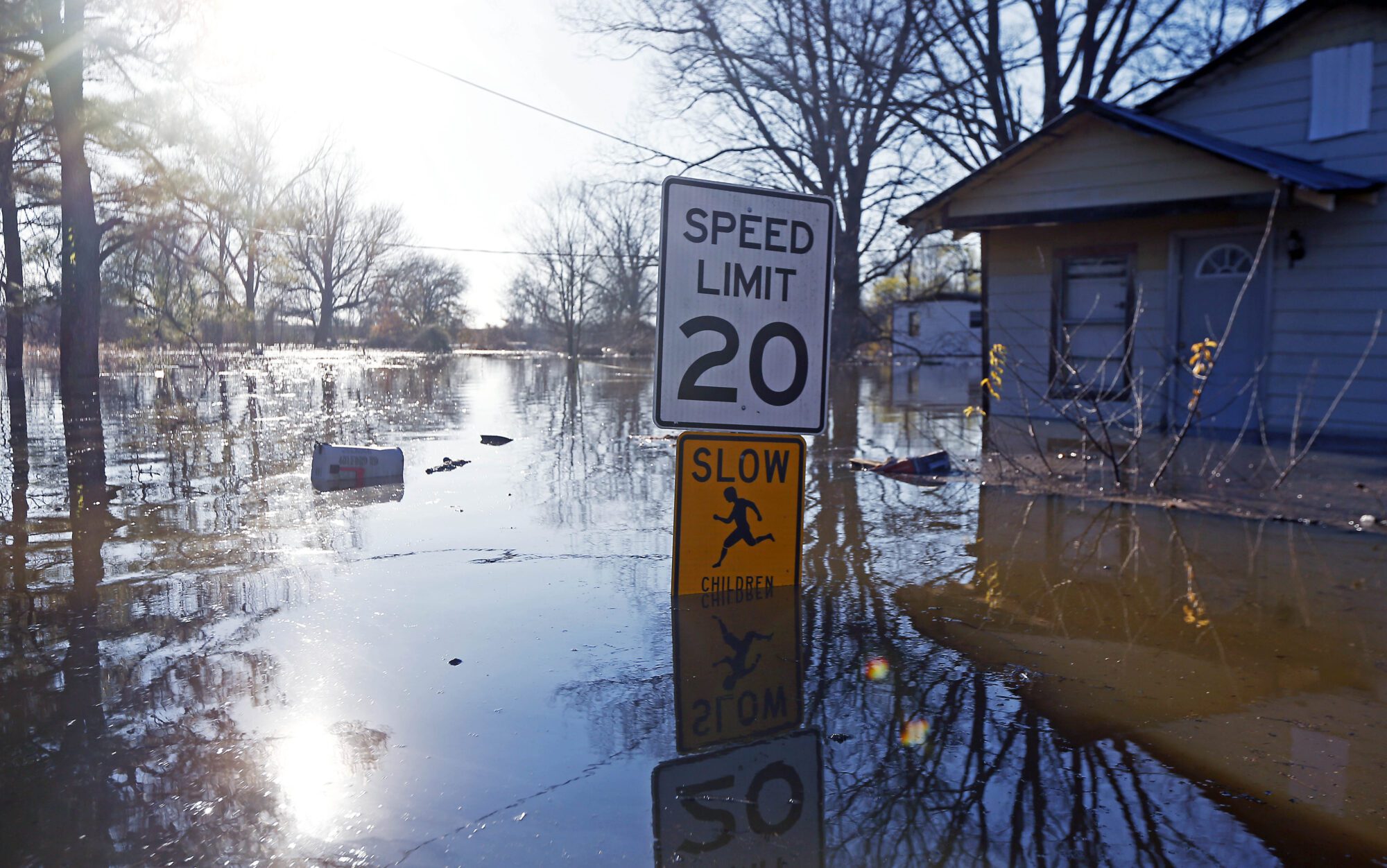This article first appeared on the Magnolia Tribune.

Several streets in the Ford subdivision are filled with waters from the neighboring Yazoo River in Vicksburg, Miss., Wednesday, Jan. 13, 2016. The river is a tributary to the Mississippi River and when that river backs up and floods, so does the Yazoo River. (AP Photo/Rogelio V. Solis)
States like Mississippi have joined in a lawsuit challenging the new flood insurance risk rating system Insurance Commissioner Chaney says is shrouded in secrecy and less than fair to consumers.
A recent federal flood insurance rating system change could soon increase rates for property owners across the country, including Mississippi where the start of another hurricane season has insurance on the minds of many. The rating system, which comes from the National Flood Insurance Program (NFIP), sets rates across the U.S. for flood insurance.
At present, the average cost of flood insurance for a family is $858. Under the new rating system, “Risk Rating 2.0. – Equity in Action,” this could more than double, reaching $2,137. Such an increase would have significant, if not catastrophic impacts on homeowners and communities in states like Mississippi where the median income remains ranked near the bottom compared to other states.
In light of the change, a lawsuit was filed by several state Attorneys General. Mississippi’s AG Lynn Fitch was among them.
The Federal Emergency Management Agency (FEMA), Homeland Security, and Federal Insurance Mitigation Administration have been named in the multi-state lawsuit joined by Mississippi Attorney General Fitch. The suit challenges a recent federal insurance rating formula that could cause rates to increase more than 10 times.
The lawsuit argues that the new rating deviates from current federal law that was established by the NFIP. Current standards require that rates be as reasonable as possible in order to encourage homeowners to protect against any catastrophic flood risks.
The NFIP is the primary source of flood insurance coverage for more than 5 million policies in the U.S., amounting to over $1.3 trillion in coverage. This coverage spans over 22,500 communities. Mississippi alone has at least 31,682 policies from NFIP in place.
The plaintiffs in the case include Attorneys General from Louisiana, Florida, Texas, Idaho, Kentucky, Montana, North Dakota, South Carolina, and Virginia. They argue that FEMA failed to work collaboratively with states and local authorities in risk mitigation efforts, such as levees where the efforts have previously made insurance rates more affordable.
“Homeowners who suffer natural disasters should expect us to come alongside them and offer a helping hand,” said General Lynn Fitch. “Instead, the Administration’s latest action makes flood insurance prohibitively expensive, forcing many homeowners to leave their homes or face bankruptcy or foreclosure.”
The Attorneys General argue that in developing the “Equity in Action” plan, the agencies “made assumptions about millions of Americans’ property, about important scientific questions, about mitigation measures, about the future, about homes, and about how all of these assumptions would all interact.”
The lawsuit says the methodology behind the rating system would have benefitted from public notice and comment which was not offered.
Mississippi Insurance Commissioner Mike Chaney said the new risk rating is shrouded in secrecy and less than fair to consumers.
“While Risk Rating 2.0 initially looked promising, it has proven to be less than fair to consumers and is shrouded in secrecy. The financial impact to many consumers has been, and continues to be, devastating,” said Commissioner Chaney. “I support General Fitch’s efforts in joining the multi-state suit and fighting for consumers, both in Mississippi and beyond.”
This article first appeared on the Magnolia Tribune and is republished here under a Creative Commons license.
Read original article by clicking here.

